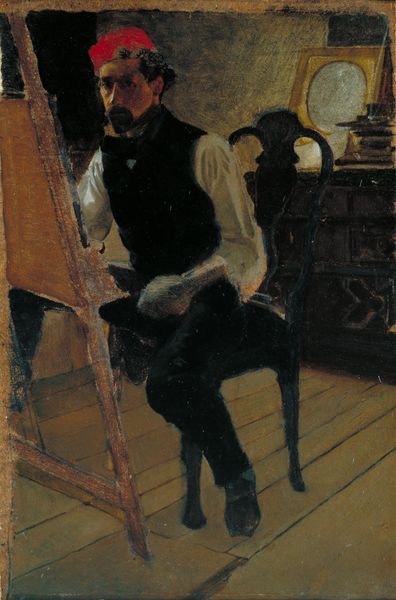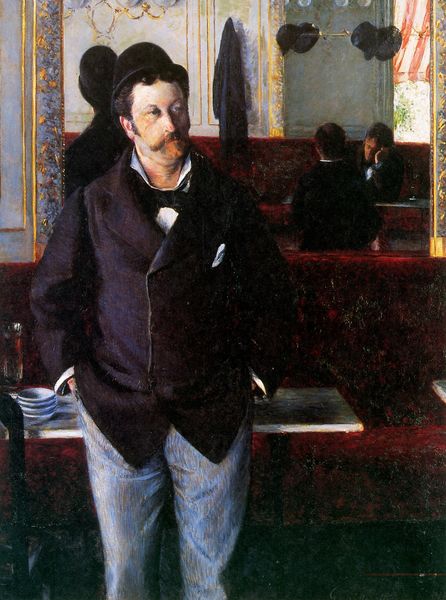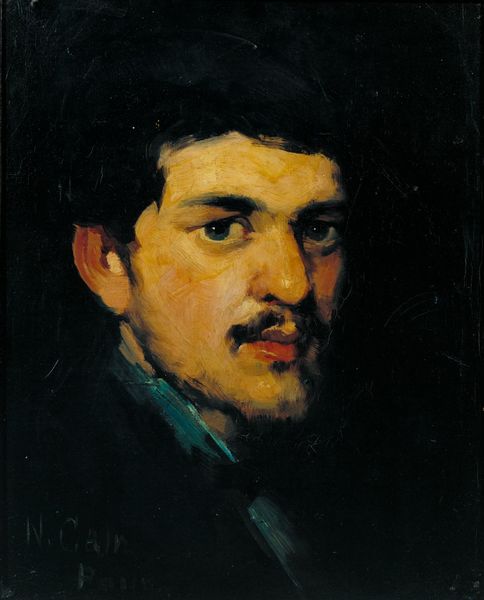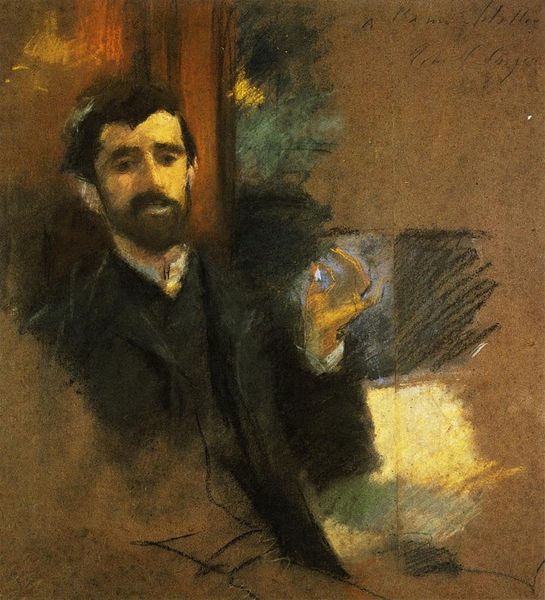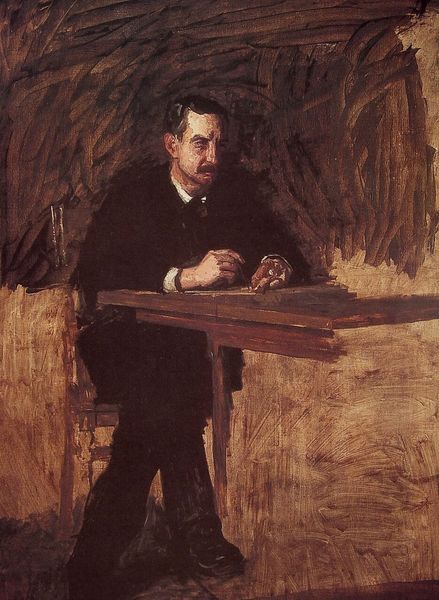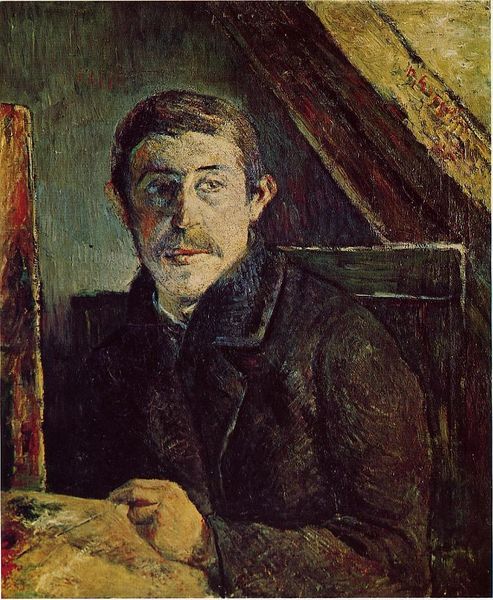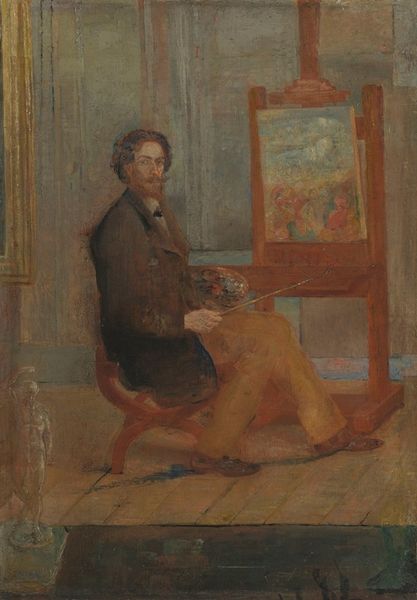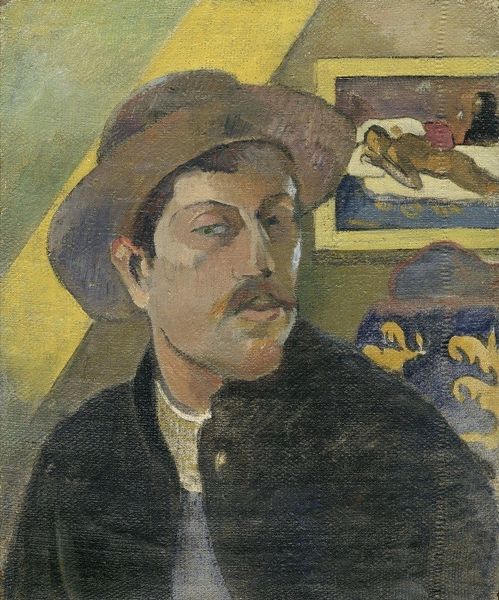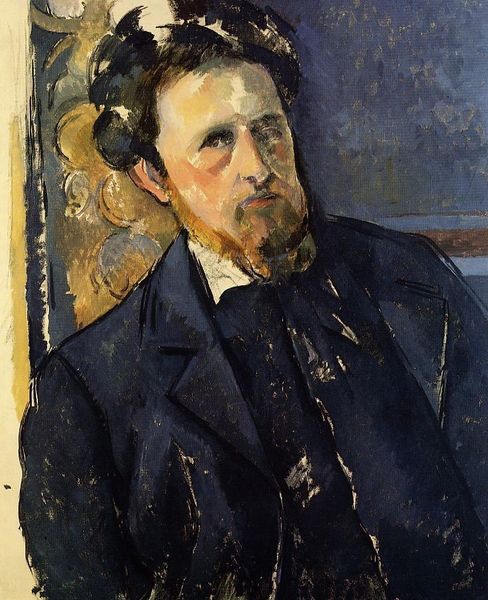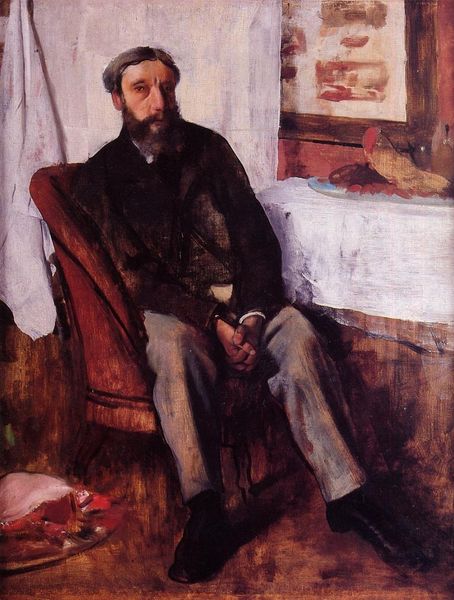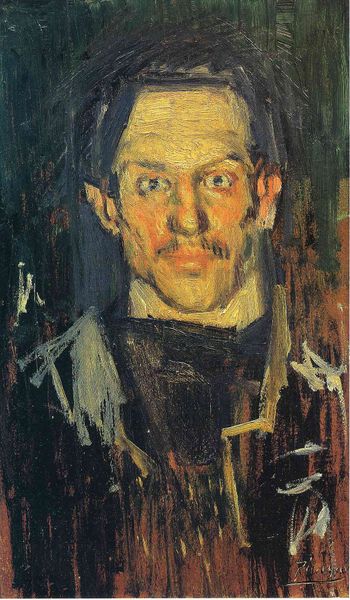
oil-paint
#
portrait
#
self-portrait
#
impressionism
#
oil-paint
#
oil painting
#
genre-painting
#
portrait art
Dimensions: 90 x 115 cm
Copyright: Public domain
Editor: This is Gustave Caillebotte's "Self-Portrait with an Easel," an oil painting from 1880. I find it so intriguing – a portrait of the artist at work, but with so many layers. What can you tell me about the symbols in this painting? Curator: Well, let's start with the most obvious symbol: Caillebotte himself, immortalized as an artist. Notice how he's positioned in his studio, almost enthroned, palette in hand, suggesting creative power. The easel acts as a framing device, doesn't it? But it's more than just a studio prop. Consider the history of self-portraits – traditionally, they assert the artist’s place in society. Editor: Yes, it feels very deliberate, and what about the painting on the easel - the one Caillebotte is working on in the artwork? Does that offer an extra layer of interpretation? Curator: Absolutely. That unfinished canvas within the painting speaks volumes! Think of it as a metaphor for the creative process itself: a constant state of becoming. And note the earlier artwork, perhaps a work in progress – is he reflecting on his past creations, his own artistic evolution? Does this imagery align with the other more traditional portraiture in France? Editor: That’s a really interesting perspective. So the entire painting, down to the unfinished canvas, becomes a symbol? Curator: Precisely. Each element tells a part of his story. Take note, also, how Caillebotte shows himself seated as though at leisure. This pose is reminiscent of traditional power dynamics shown throughout visual culture. How do these contextual clues give you an interpretive guide for what follows? Editor: Wow, I had not noticed that Caillebotte uses composition in the tradition of earlier French court portraiture! I'll be looking at his art with new eyes now. Curator: The beauty of art history, is not seeing one thing, but many. Now consider these additional concepts when you investigate his other work...
Comments
No comments
Be the first to comment and join the conversation on the ultimate creative platform.

